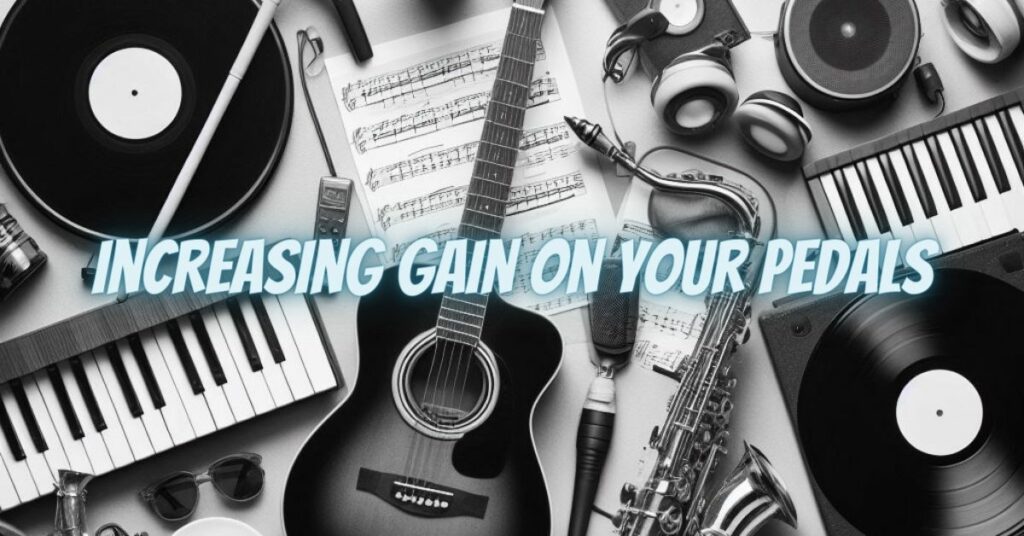Every guitarist, at some point, yearns for that extra punch, bite, and saturation in their tone. Whether you’re chasing searing leads or crushing rhythms, adding more gain to your guitar pedals can take your playing to the next level. In this article, we’ll explore various techniques and methods to crank up the gain and unleash a fiery sonic fury from your pedalboard.
- Gain Knob on Your Pedal:
- The most straightforward way to increase the gain on your pedal is to turn the gain knob up. This control is found on virtually all overdrive, distortion, and fuzz pedals. Start by gradually turning the gain knob to the right until you achieve the desired level of saturation.
- Stacking Pedals:
- One popular method among guitarists is stacking pedals. This involves using multiple gain or distortion pedals in your signal chain. You can start with a low-gain pedal to preserve clarity, and then add a higher-gain pedal to push your sound into more saturated territory.
- Boost Pedals:
- Utilizing a boost pedal in your signal chain can provide an instant gain boost. A clean boost pedal, like the MXR Micro Amp or the Electro-Harmonix LPB-1, can be placed before or after your distortion pedal to increase the overall volume and saturation.
- Overdrive Pedal Before Distortion:
- Placing an overdrive pedal before a distortion or fuzz pedal can create an interesting cascading effect. The overdrive acts as a “preamp” and can push your distortion pedal into higher levels of gain and sustain.
- EQ Pedals:
- Using an equalizer pedal, like the MXR 10-Band EQ, can be an effective method to shape your tone and increase gain. By boosting the midrange and upper frequencies, you can add harmonic content and make your sound cut through the mix with more authority.
- Amplifier Gain:
- If you’re using an amplifier with a gain channel, consider turning up the gain control on your amp. This can significantly impact your tone, especially if you’re playing through a tube amplifier. Be cautious not to push it too far, as it can lead to excessive noise and feedback.
- Pickup Selection:
- Experiment with your guitar’s pickup selection. Using the bridge pickup often results in a more aggressive and higher-gain tone compared to the neck pickup, which can be warmer and cleaner.
- Guitar Volume Knob:
- Don’t forget to use your guitar’s volume knob. Rolling it back slightly can clean up your sound, while cranking it to the max can push your pedals into more intense gain territory.
- Experiment with Pedal Order:
- The order of your pedals in the signal chain can significantly impact your gain structure. Experiment with different arrangements to find the ideal order that provides the most gain while maintaining clarity.
- Hot-Rodding Your Pedals:
- If you’re technically inclined, some guitarists modify their pedals to increase gain. This should be approached with caution and requires knowledge of electronics.
Adding more gain to your guitar pedals is a journey of experimentation and discovery. Each guitarist’s tonal quest is unique, and it’s essential to tailor your approach to your playing style and musical preferences. Whether it’s by cranking up the gain knob, stacking pedals, or employing creative signal routing, the path to unleashing more gain is paved with endless possibilities. Don’t be afraid to push the boundaries and find your own sweet spot for a fiery and expressive tone.


